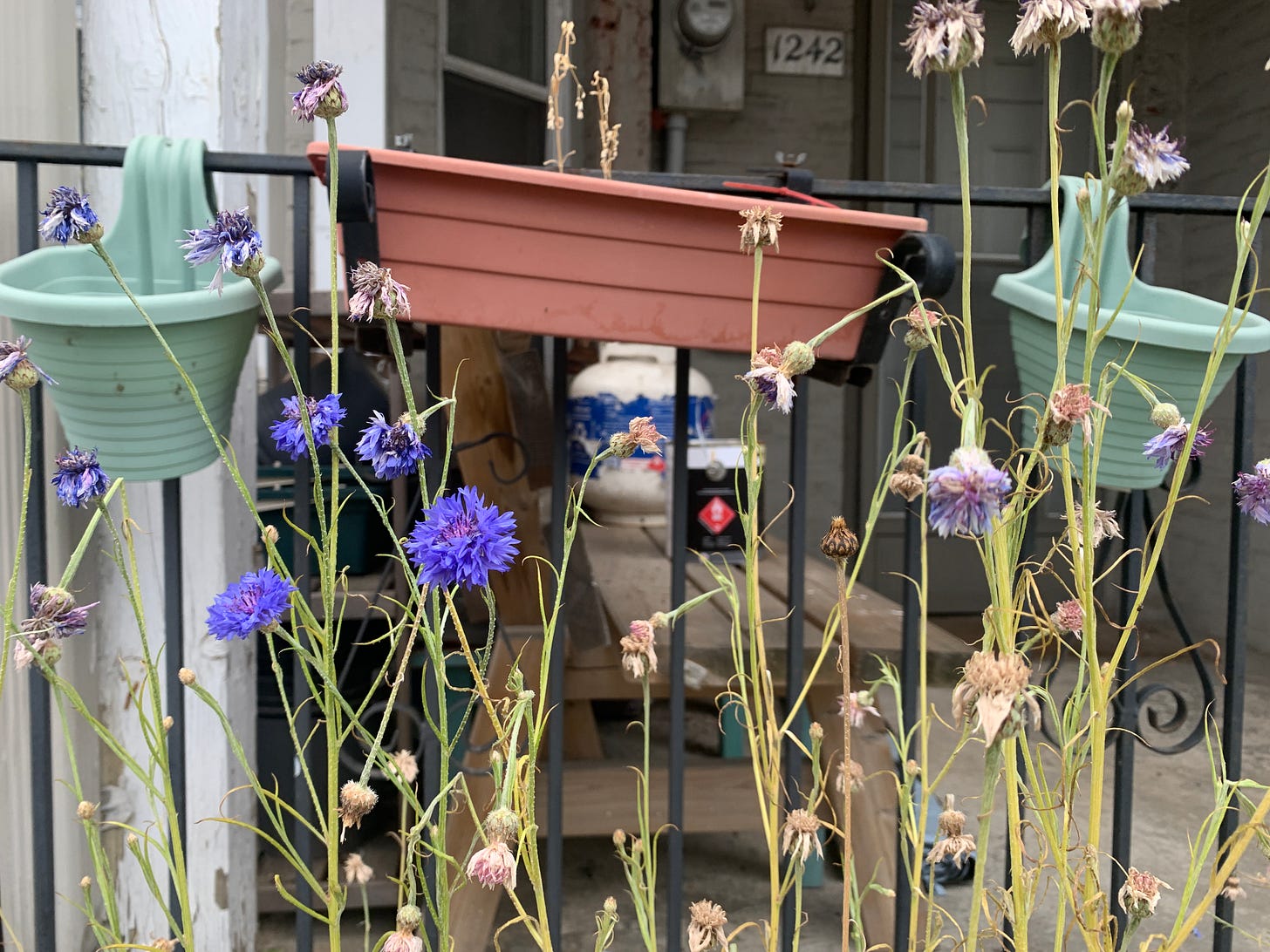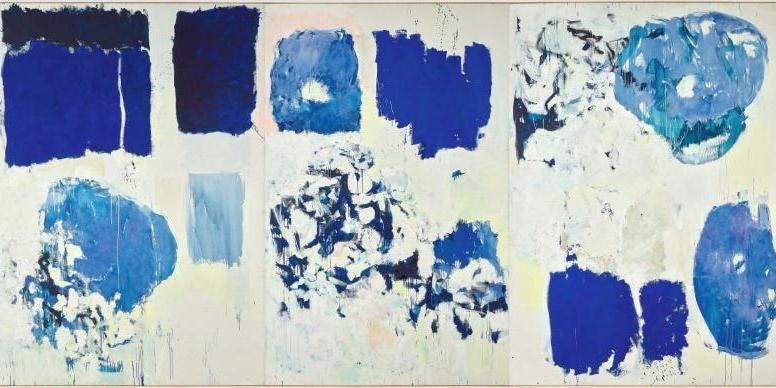The Bluet
And is it stamina
that unseasonably freaks
forth a bluet, a
Quaker lady, by
the lake? So small,
a drop of sky that
splashed and held,
four-petaled, creamy
in its throat. The woods
around were brown,
the air crisp as a
Carr's table water
biscuit and smelt of
cider. There were frost
apples on the trees in
the field below the house.
The pond was still, then
broke into a ripple.
The hills, the leaves that
have not yet fallen
are deep and oriental
rug colors. Brown leaves
in the woods set off
gray trunks of trees.
But that bluet was
the focus of it all: last
spring, next spring, what
does it matter? Unexpected
as a tear when someone
reads a poem you wrote
for him: “It’s this line
here.” That bluet breaks
me up, tiny spring flower
late, late in dour October.
—James Schuyler Selected Poems (Farrar Straus and Giroux, 1988)
I love a makeshift garden once cared-for but now a bit wild and I took a picture of this one the other day and was reminded of the blue flowers that grew in my front yard for a year or two that I don’t think anyone planted that stay blue even when they dry out. They reminded me of the spice store in Paris with every imaginable edible thing where I bought the tiny jar of dried cornflowers that I thought I would use for a medieval blue risotto that I was reading about. I also always meant to make them into ink but never did.
Centaurea cyanus, better known as Cornflower or Batchelor Button, is endangered in much of Europe but grows like a weed in North America. It is one of those few truly blue wild flowers. They are called Bluets in France although that is also sometimes the name for blueberries in French too and the word became the title of Maggie Nelson’s book before she knew its meaning and after that Joan Mitchell Painting which also interested Lydia Davis. A year after Joan Mitchell’s painting there was James Schuyler’s poem (see above) which I love but it turns out he was talking about a different flower houstonia caerulea or Azure Bluet. There is an old Vermeer colour called cornflower blu,e and a cornflower derived natural pigment called Boyle’s Blue, and a Pantone colour that doesn’t look like cornflowers to me at all. In most of Europe they are a companion for corn or cabbage protecting crops from insects. In France they are a companion in the fields to poppies and act as a flower of remembrance like poppies. In England, added to loose leaf Earl Grey tea, their dried petals glitter with something like royal blue. In Germany and Prussia, the flower signals nationalism. In Russia they colour vodka blue. I understand why I was drawn to the cornflower, it’s sturdy, weedy, versatile, steeped in poetry, art, and obscure medieval recipes, and it’s an ink plant. But there’s something else there, something in that almost electric colour that suggests some further secrets.
Keep reading with a 7-day free trial
Subscribe to The Colour | Newsletter | Lab | Community to keep reading this post and get 7 days of free access to the full post archives.








